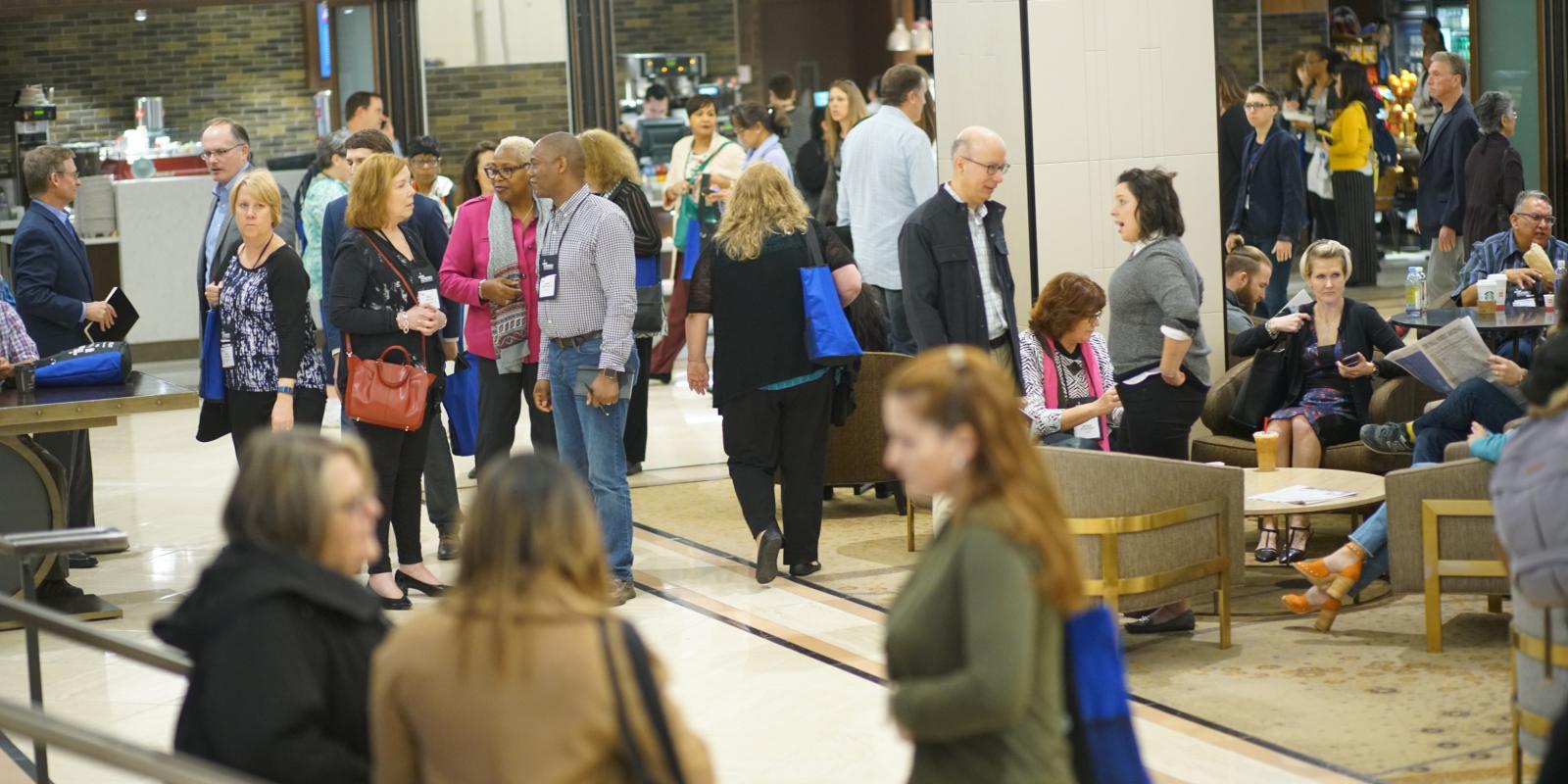Sponsored by ASA’s Legacy Corps, we are running a series of stories from the ASA Storytelling Project, which invites you to reflect on your personal and professional lives, especially as they intersected with aging and ASA, by writing stories. We encourage all ASA members to submit their stories of 250-1,000 words, with a 25-50 word bio, to ASAstorytellingproject@gmail.com.
At ASA’s 2018 conference in San Francisco, I met lawyers, lobbyists, professors, doctors, nurses, social workers, case managers, psychologists, physical therapists, yoga and aerobics instructors, nutritionists, architects and journalists, all of whom focused their career on older adults. I even met a woman with an advanced degree in aromatherapy who used scented oils to calm agitation and anxiety in people with dementia. But the person I was most excited to meet at the conference was my cousin Jennifer, who I had not seen since she was 12 and attending her grandmother’s funeral. Now 31, she lives in New York, just 24 miles from me, and we bumped into each other in San Francisco.
Our grandmothers were sisters and the only people in their family to survive the Holocaust. They lost siblings, parents, grandparents, aunts, uncles and more than 20 first cousins. Jennifer’s grandmother, Helena, married the British soldier who liberated her from the Nazis. They had one child, Angela, Jennifer’s mother. My grandmother had two children, my father and my aunt Rochelle. Rochelle had a daughter, Lilly, who is 28.
During the war, our grandmothers’ formal education was interrupted, their homes and money were stolen from them, their family and friends were murdered. They focused on surviving, dreaming of freedom, the possibility for future careers and a new life of opportunities.
After the war, they both came to America. Not knowing the language and without appropriate skills, education or work experience, few doors were open to them. My grandmother became a salesgirl at Macy’s, selling jewelry. But her real love was the theater and movies. She dreamed of becoming a director or stage manager, referring to these as her “lost professions.” For 60 years, she collected playbills from every show on Broadway.
My grandmother and my aunt did whatever they could to build better lives for their families, so their children and grandchildren would have opportunities they did not, including the freedom to choose whichever career interested them.
Jennifer, Lilly and I all had that freedom. Yet we all became geriatric social workers, and Jennifer’s brother is in social work school as well. Is it a coincidence, or something more?
On the second day of the conference, Jennifer and I had lunch together. We discovered that in addition to both living in New York and being geriatric social workers, we loved yoga and were serious Yankees fans. We both had attended the State Society on Aging conference the past October but didn’t bump into each other. Her mother is retired, enjoys yoga and takes piano lessons. “So does my mom!” I said.
‘People are trapped in history and history is trapped in them.’
Jennifer showed me the tattoo on her shoulder; it says Helena, for her grandmother. She wears her grandmother’s mother’s wedding ring—the ring her grandfather gave her grandmother in Germany after liberating her from the Nazis—as her own. I showed her a picture of my 2-year-old niece, Louise Helena, named for the two sisters. (Louise for my grandmother, who was Luba in Poland and then Libby in America).
I shared how my cousin Lilly and I spoke with my grandmother every day by phone. Jennifer had a similarly close relationship with her grandmother. We both believe that our relationship with our grandmothers influenced our decision, as well as Lilly’s, to become geriatric social workers.
It felt good to share stories, compare notes, and chat about our grandmothers. Who knows. Maybe it was our grandmothers, smiling and singing their favorite Broadway tunes while watching us from above, that guided our paths together. We agreed to see each other again soon.
The program for the On Aging conference is more than 200 pages long and contains absolutely any session or poster you could imagine (see page 141: “Guiding Gay Seniors Through Grindr.” Or page 121, “Engaging Older Adults to Teach Students’ Living History’ ”: “This presentation will address the powerful impact of intergenerational legacy work to help older adults reframe difficult experiences . . . we will show how older adults in our legacy program reexamine experiences to become valuable primary source experts around events of historical significance. . .” Another describes the session “Dor Vador: Sharing the Wisdom of Elders.” In it, “Participants celebrate the knowledge and wisdom produced from retelling the stories of our lives.”
Jennifer sent me a link to videos of our grandmothers telling their stories of what happened to them during the Holocaust, which I had never seen. So, while my colleagues were sitting in conference rooms learning about the importance of older adults telling their stories, my cousin was sharing a link to a video of my grandmother and aunt doing it!
On the third day of the conference, I went to a session on how the trauma of the Holocaust affected survivors’ children and grandchildren, how the Holocaust “overwhelmed their lives like a shadow.”
James Baldwin wrote, “People are trapped in history and history is trapped in them.” When I said goodbye to Jennifer and gave her a hug, I didn’t want to let go. We hope to see each other soon and already made plans to meet at next year’s On Aging conference. Our grandmothers would have liked that. They survived so we could be here.
Martha Flumenbaum is a medical social worker at Hospice of New York. She enjoys reading, movies, music, theater, yoga, tennis, travel, going to the beach, and rooting for the Yankees.
It’s not too late to register for On Aging 2024, if you haven’t already, please do so here.
Photo caption: ASA members reconnect at the 2018 On Aging conference.
Photo credit: Sandy Huffaker













